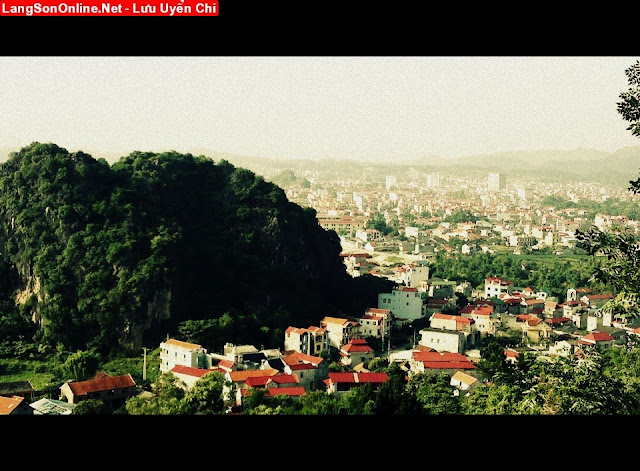Lang Son is a northeastern province
which is located on the Sino-Vietnamese border over a stretch of 253km.
The capital of Lang Son, 500m above sea level, is situated on the left
bank of Ky Cung River. Opposite the town and on the far side of the
river is Ky Lua Market. The market is accessible by means of the Ky Cung
bridge. Standing on the bridge, visitors can see a high mountain peak
resembling a woman with a baby in her hands.
From time immemorial, the peak has been given the name of Vong Phu (Awaiting one''s husband). Legend has it that Lady To Thi with a baby in her hands stood there day and day waiting for the return of the husband who had gone to war. She waited so long that both her and her child were turned into stone. Dong Dang, a town on the Sino-Vietnamese border, is 14km from Lang Son town. Just three kilometres to the east of Dong Dang is the Huu Nghi (Friendship) border gate. As long as living memory can testify, the border gate has been a major point for the exchange of goods between Vietnamese and Chinese living on either side of the border areas. After a period of border conflicts, the border gate has once again opened to traders and visitors of the two countries.
Lang Son has favourable climatic conditions and is home to some valuable fruits such as pears, plums and Japanese persimmons. Lang Son is also home to some picturesque grottoes, especially Tam Thanh Grottoes (Nhat Thanh, Nhi Thanh, Tam Thanh). The most famous is Tam Thanh on the western end of Ky Lua street, because it resembles a crouching elephant on a vast grassy field. The entrance to the grotto is almost obscured from sunlight, because it is covered with a dense foliage of trees. High on the wall to the right side of the entrance , there remains a poem carved deep into the stone. The poem was written by Ngo Thi Si (1726- 1780) when he was stationed in Lang Son as the commander of the Lang Son military post. Ngo Thi Si praised the beauty of the magnificent mountain and landscapes possessed by Lang Son. Inside the grotto is a statue of Buddha. Many stalactites and stalagmites make the grotto look more picturesque and mystical. Ngo Thi Si was the person who discovered Nhi Thanh Grotto. The name Nhi Thanh was chosen by Ngo Thi Si to commemorate his birth place in Ta Thanh Oai village in Thanh Oai district in Ha Tay province. To commemorate his great contributions to the grotto, Ngo Thi Si had his portrait carved on an interior wall.



No comments :
Post a Comment